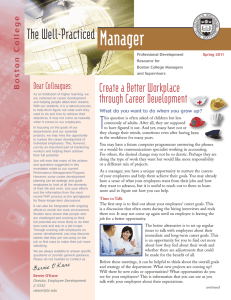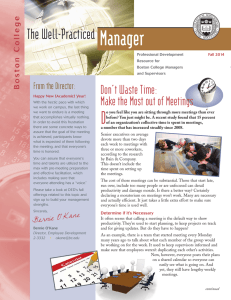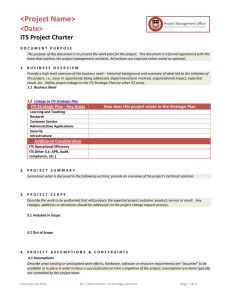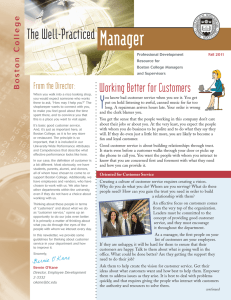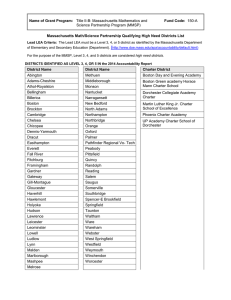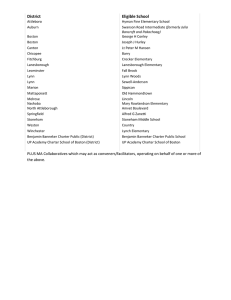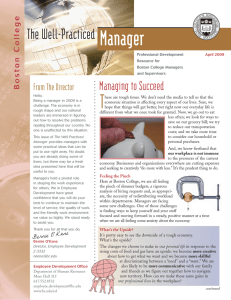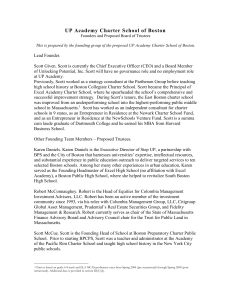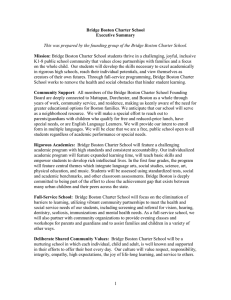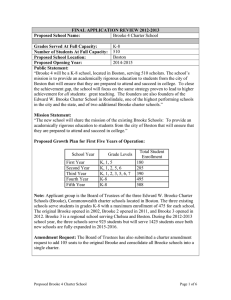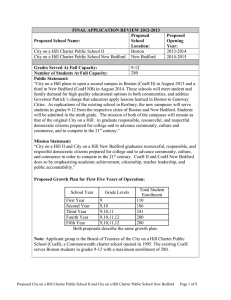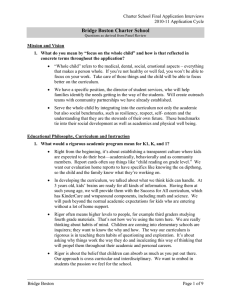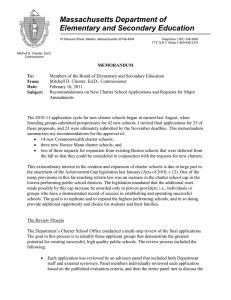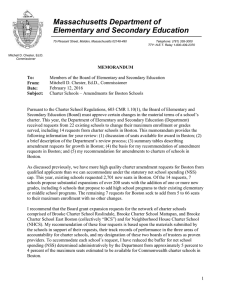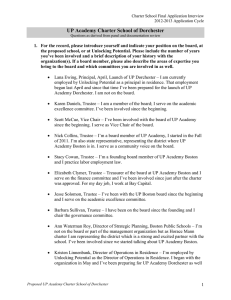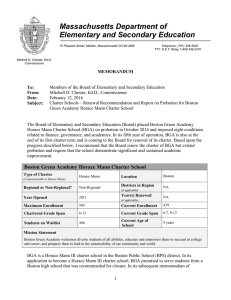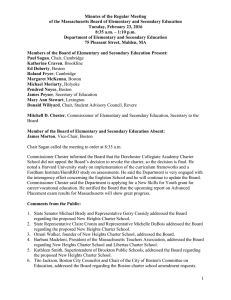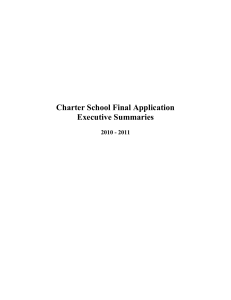Manager The Well-Practiced Using Project Management to Get Things Done
advertisement
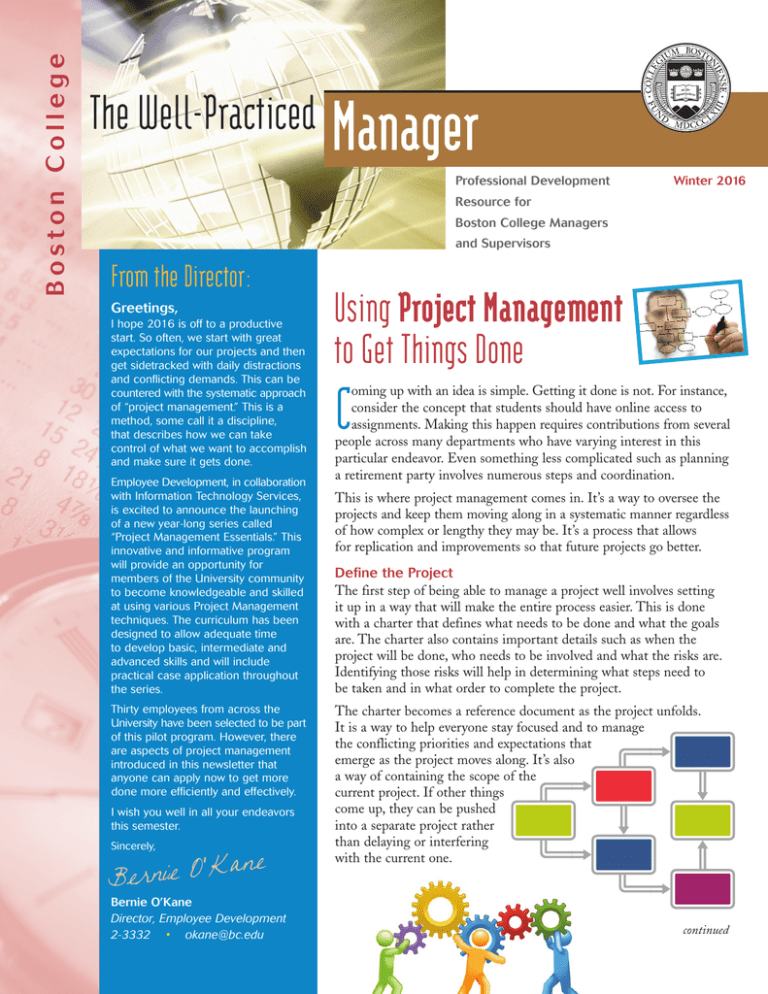
Boston College The Well-Practiced Manager Professional Development Winter 2016 Resource for Boston College Managers and Supervisors From the Director: Greetings, I hope 2016 is off to a productive start. So often, we start with great expectations for our projects and then get sidetracked with daily distractions and conflicting demands. This can be countered with the systematic approach of “project management.” This is a method, some call it a discipline, that describes how we can take control of what we want to accomplish and make sure it gets done. Employee Development, in collaboration with Information Technology Services, is excited to announce the launching of a new year-long series called “Project Management Essentials.” This innovative and informative program will provide an opportunity for members of the University community to become knowledgeable and skilled at using various Project Management techniques. The curriculum has been designed to allow adequate time to develop basic, intermediate and advanced skills and will include practical case application throughout the series. Thirty employees from across the University have been selected to be part of this pilot program. However, there are aspects of project management introduced in this newsletter that anyone can apply now to get more done more efficiently and effectively. I wish you well in all your endeavors this semester. Sincerely, ane Bernie O’K Bernie O’Kane Director, Employee Development 2-3332 • okane@bc.edu Using Project Management to Get Things Done oming up with an idea is simple. Getting it done is not. For instance, consider the concept that students should have online access to assignments. Making this happen requires contributions from several people across many departments who have varying interest in this particular endeavor. Even something less complicated such as planning a retirement party involves numerous steps and coordination. C This is where project management comes in. It’s a way to oversee the projects and keep them moving along in a systematic manner regardless of how complex or lengthy they may be. It’s a process that allows for replication and improvements so that future projects go better. Define the Project The first step of being able to manage a project well involves setting it up in a way that will make the entire process easier. This is done with a charter that defines what needs to be done and what the goals are. The charter also contains important details such as when the project will be done, who needs to be involved and what the risks are. Identifying those risks will help in determining what steps need to be taken and in what order to complete the project. The charter becomes a reference document as the project unfolds. It is a way to help everyone stay focused and to manage the conflicting priorities and expectations that emerge as the project moves along. It’s also a way of containing the scope of the current project. If other things come up, they can be pushed into a separate project rather than delaying or interfering with the current one. continued ■ ■ ■ ■ E continued from reverse side ■ N ■ CU ■ ■ ■ ■ ■ ■ ■ Keep the Project Moving The project manager’s role is to set up a plan to complete the project and make sure everyone is doing their part. This involves determining what steps are involved, who should do what and how long each will take. RS ■ E LD ■ TE A O ■ M STAK E H 2 M SPO R SO ST O ■ RS ■ ■ ■ ■ It is helpful to document the project throughout the process well enough that it could be taken over by someone else. This can be especially useful as often team members will be working on multiple projects. ■ ■ ■ It is important at the beginning of a project to identify the four categories of people involved with a project. Knowing who these people are enables effective communication throughout the project. ■ ■ ■ ■ ■ ■ ■ Sponsor: The person or people who requested the project Team: The people who will complete the project. These may change throughout the process and some may be involved only with certain stages. Stakeholders: People who will be affected by the project but are not on the team. This could be other departments or the community. ■ ■ ■ ■ ■ ■ ■ ■ ■ ■ ■ ■ ■ Customers: The people for whom the project is being done such as students, faculty or parents. Communicate to Stay on Track Throughout the project, the project manager will be the one to ensure that everyone is in touch with each other and knows what is coming. This maybe done through meetings, emails updates, a group text or a traditional memo. It helps to establish at the beginning of the project the best methods of communication for all those involved. ■ Evaluate to Improve Performance Once a project is complete, the project manager has one more important task. That is to review what happened. What went well? What went wrong? What could be done better next time? Each project yields lessons that can be beneficial for everyone involved. ■ ■ ■ ■ ■ ■ ■ ■ ■ ■ ■ ■ ■ ■ ■ ■ Questions to consider when setting up the charter: Editorial Services provided by Jennifer Powell, The Excellent Writers excellentwriters.com Graphic Design by Tania Fine Helhoski, BirdDesign www.birddesignstudio.com 1. What is the goal of the project? 2. How will you know when the project is complete? 3. What is the timeline? 4. Who needs to be on the team? 5. What resources will be needed? 6. What are the challenges and how will they be overcome? 7. What are the risks and how will they be addressed? 8. Who will be affected by the project? 9. Who needs to know about the project? 10. How will communication be handled? Employee Development Office Department of Human Resources • 129 Lake Street 617.552.8532 • employee.development@bc.edu • www.bc.edu/ed
